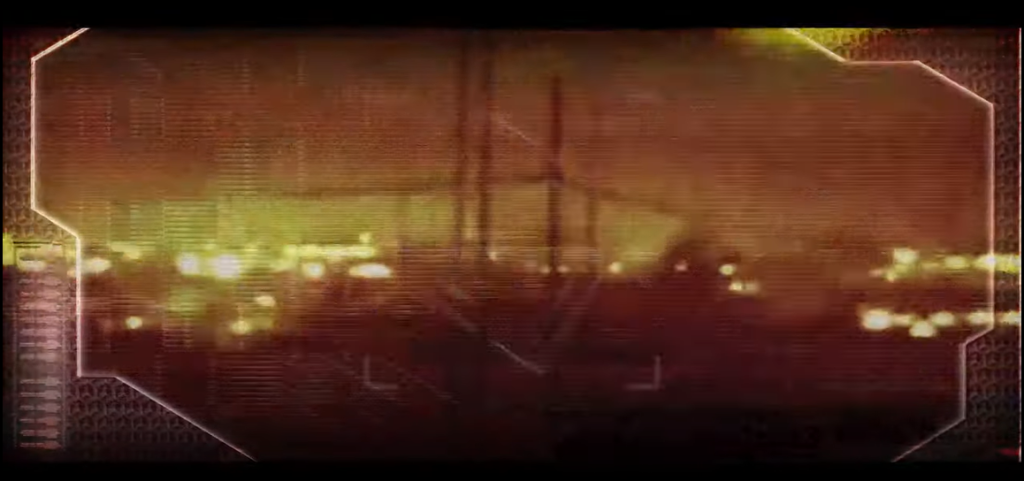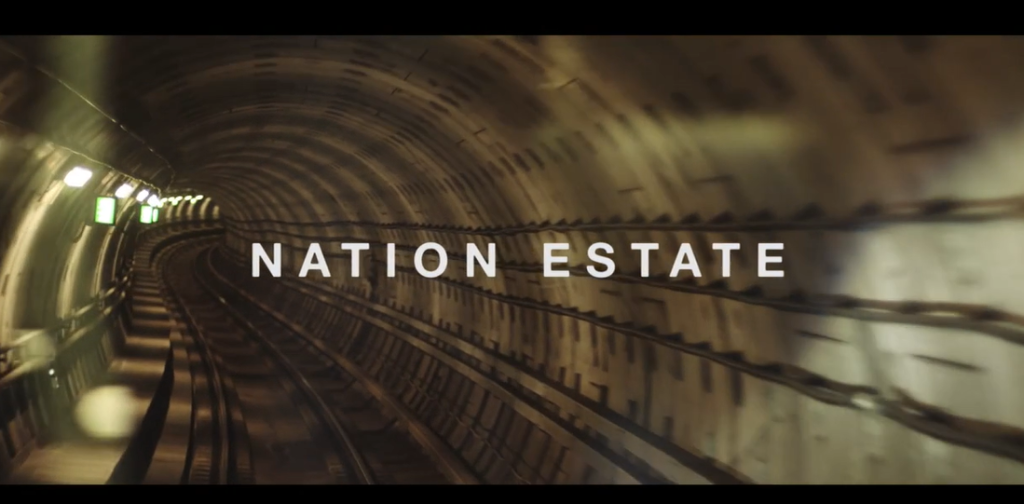
The Future was Desert by Sophia al-Maria is a video essay surrounding the theme of gulf futurism. Beautiful and aesthetically compelling visuals dominante alongside her robotic narrative voice, with slight humor she discusses how the future is in the deep past for the Arab world. She presents the sahara as the savanna and the gulf as the garden, as the oasis it once was before memory and before people began disrupting the natural order of things. She adds an environmentalist aspect alongside various visuals with of nature, by saying we are getting closer to planetary suicide and pleading at the end of the film to not kill the world. The peak of the comedic element are the distorted images of Kim Kardashian, adding a very modern and pop culture component while referring to the current society as wasted bodies whose minds are rotting. In the process of we have ruined the resources to commercialize and ‘feed idols’ rendering the future scarce. We are constituting the mirage to our own demise, but in the desert the answers lie as it compromises the future and the past together. She refers to countries where the oil is going to run out so they begin to invest their money into shock factor to secure their future in other methods such as tourism. This enforces the Gulf Paradox, where the gulf represents the future with new skyscrapers and technology yet still retains morals from the past.

In Fatima al-Qadiri’s 2013 video Desert Strike, Ghost Raid is a rather powerful and strong piece yet personal. As a Kuwaiti, she was a young girl when the first Gulf War happened in 1990, she describes Desert Strike as an audio memoir of that time reflecting in both the visuals and the sound. The visuals look like a war video game zeroing-in on the target and in combination with the strong beats, they give a heightened sensoral experience to what she and other Kuwaiti’s probably experienced. Shortly after the first invasion, she recalls playing the Desert Strike inspired war video game clearly seen as the inspiration for the visuals, that composes the technological and modern element alongside strong beats and synthesizer sounds. This creates a relationship between the virtual and reality of war. The element of the video game falls into what al-Qadiri calls the Gulf’s “consumer-culture robot desert” where she specifies the teenage life revolves around the mall, video games, and television.

In Larissa Sansour’s 2013, dystopian sci-fi short film Nation Estate with minimal dialogue it depicts the story of Palestine in the future. Futuristic Palestine to Sansour is a skyscraper where every floor is a Palestinian city or area, accessible with a key that has the Palestinian flag representative of ‘The High Life.’ It draws on the tropes of science fiction and futurism, discussing issues of territory, geo-politics, identity, occupation, nation(alism), alien(ation), and hope. The film takes you on trip that shows you around the futuristic Palestine, almost seeming like VR, as the protagonist returns home to Bethlehem from a trip but her home no longer exists turned to a skyscraper or a commodified version of Palestine. As she’s returning home, she passes by the western wall seeming to be an exhibition in a museum. The film ends with her looking at the Dome of the Rock from her window, revealing that she’s pregnant in what seems as a hope for the future of Palestine. But as the camera pans out and shows the skyscraper surrounded by the separation wall depicting the life of a Palestinian to still be one of confinement, except in the future it is more luxurious.
A visually appealing short film, tells the almost sad story of the Palestinian in the present and in the future. Nation Estate can be seen as the glossary of Palestinian condition, with the main issue being that confinement and being restricted shown in the film with restrictions of essentials such as water, food, and travel that Palestinians are have endured, are enduring, and will continue to endure. With the view of Jerusalem from the window, Palestinians are now in a ‘safer’ environment than before but are viewing an important site to them from a distance. The concept of the skyscraper associates to the modernity in the Arab world and the concept of restriction relates to the real life situation many Palestinians live in by living is gated communities, fenced off, and walled in.